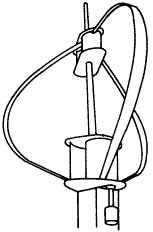Tal como num post anterior (link), vamos reutilizar o conceito do post "(...) 101" em que um dado conceito/tipo de energia é introduzido. Desta vez, o tema é a energia eólica!
Retirado do site Energy Eficciency and Renewable Energy - U.S. Department of Energy: Although all wind turbines operate on similar principles, several varieties are in use today. These include horizontal axis turbines and vertical axis turbines.
Retirado do site Energy Eficciency and Renewable Energy - U.S. Department of Energy: Although all wind turbines operate on similar principles, several varieties are in use today. These include horizontal axis turbines and vertical axis turbines.
Horizontal Axis Turbines
Horizontal axis turbines are the most common turbine configuration used today. They consist of a tall tower, atop which sits a fan-like rotor that faces into or away from the wind, a generator, a controller, and other components. Most horizontal axis turbines built today are two- or three-bladed.
Horizontal axis turbines sit high atop towers to take advantage of the stronger and less turbulent wind at
Vertical Axis Turbines
Vertical axis turbines are of two types: Savonius and Darrieus. Neither type is in wide use.
The Savonius turbine (right) is S-shaped if viewed from above. This drag-type turbine turns relatively slowly but yields a high torque. It is useful for grinding grain, pumping water, and many other tasks, but its slow rotational speeds are not good for generating electricity. (...)


Sem comentários:
Enviar um comentário